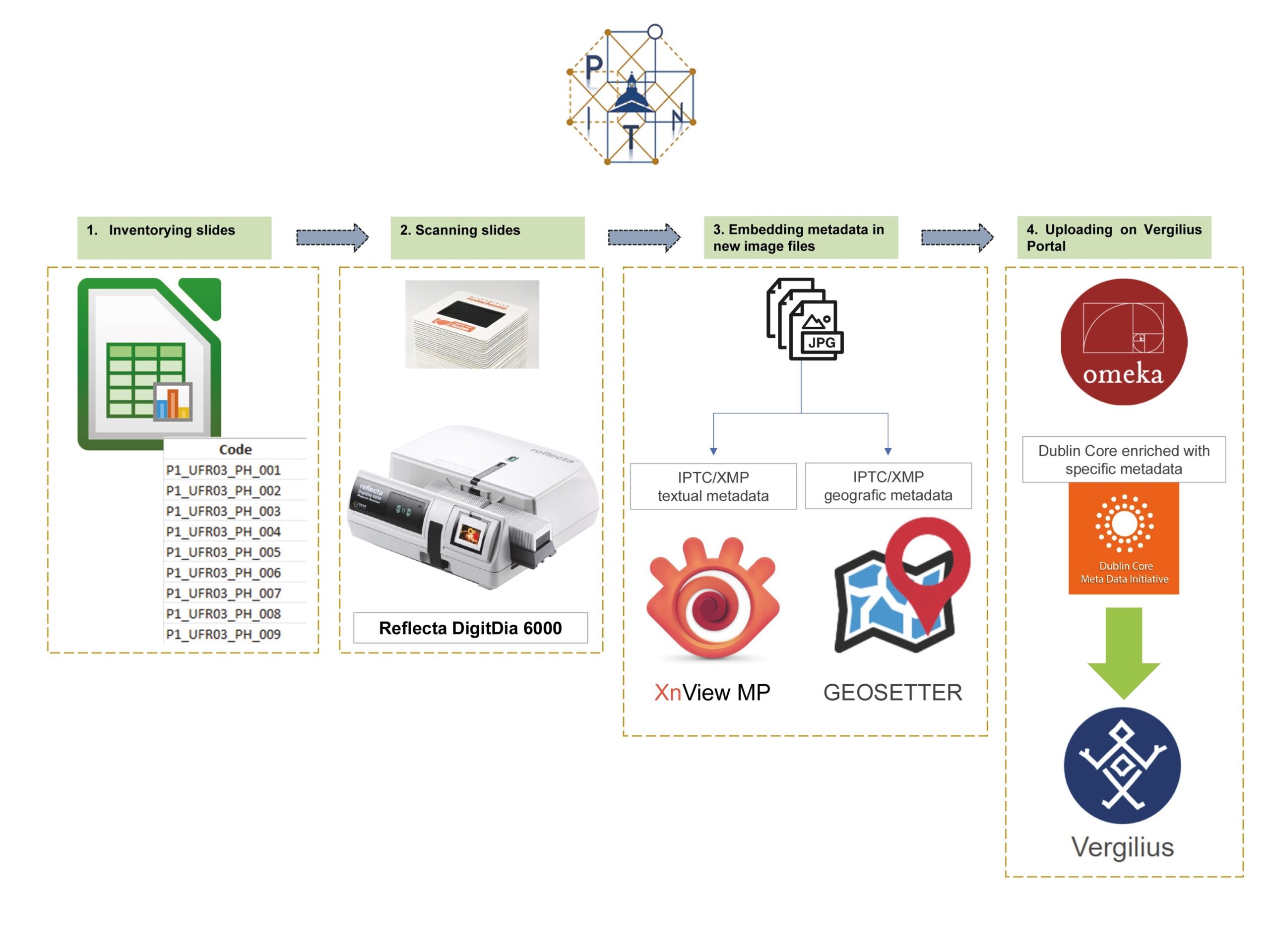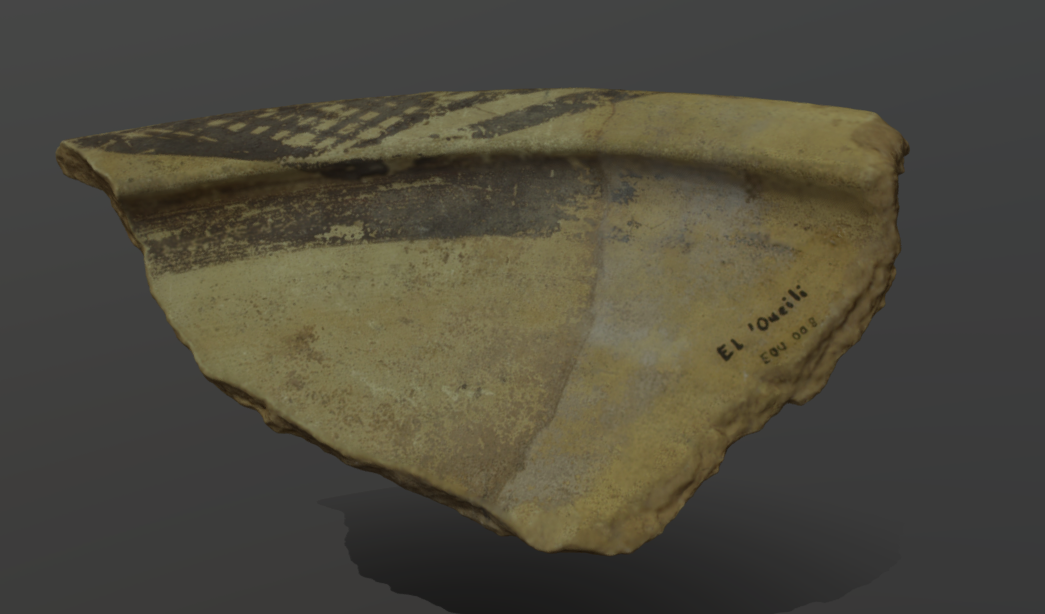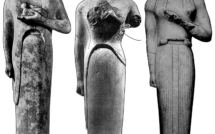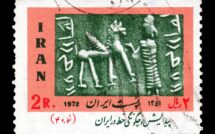

This is part of our campus spotlight on Université Paris 1 Panthéon-Sorbonne, with Columbia University.
Over the last few years, the various collections of the Department of Art History and Archeology at the University Paris 1 Panthéon-Sorbonne have been at the center of a project aiming at establishing an inventory of, studying, and disclosing the department’s cultural heritage. The Institut d’art et d’archéologie is home to various heritage collections that include a model of ancient Rome, pottery sherds from the ancient Near East, Greek antiquities, flintstones from prehistoric sites in France, movie reels (the third largest collection in France), thousands of slides and old photographs, and the personal archives of various scholars who have become part of the history of the department.
The new media center—the Pôle images et technologies numériques (PITN)—has been tasked with the digital management of the department’s heritage collections, among other duties. The PITN was created in 2015 under the impulse of Alain Duplouy, then Chair of the department, whose ambition was to place images and digital technologies at the heart of teaching art history and archaeology. At the center, scholars and students would find the technological resources necessary to develop projects involving the production and sharing of multimedia contents. Although engaged in archaeology and art history curricula, students at the Department of Art History and Archaeology often lack any kind of IT capacity. Despite the availability of various courses in GIS, databases, CAD, and 3D, students still need to develop various skills to engage in the humanities’ digital turn. The PITN was established primarily with that objective in mind.
From the beginning of the project, practical choices have been made to establish a user-friendly architecture to digitally manage our cultural heritage collections. Two core tools have been selected, which, for technical reasons operate separately: Omeka Classic, an open-source content management system (CMS), and FileMaker, a proprietary database management system (DBMS). The idea was to encourage students to focus on the collections and their content, rather than on technology. Very often, indeed, the choice of a complex digital solution not only makes humanities scholars dependent on computer specialists, but it also prevents these scholars from understanding the logic and rules behind the production of knowledge in a digital environment. Moreover, the critical condition of the departmental collections did not primarily require an IT staff, but only a curator with an interest in information technologies.
Managing two collections: old photographs and pottery sherds from the ancient Near East
The largest collection kept at the Department of Art History and Archaeology consists of a great number of slides and photographs—the result of the teaching that has taken place since the creation of the first chair of archaeology at the Sorbonne in 1876, more than a century ago. The collection includes two main categories of images: pictures taken from books and faculty’s personal photographs. Although scanning slides or reproductions of photos from books that remain available at the university’s libraries would have been useless, we nonetheless engaged in a global inventory of these images to identify the main topics represented in a century of teaching archaeology at the university and to understand the teaching methods in use within the department before the advent of digital technologies. The faculty’s personal slides are of greater interest, as they often constitute original images of archaeological sites, which may have undergone changes since first excavated, due to progress in excavations techniques, the development of mass tourism, or the destruction of sites and monuments (especially by ISIS in the Near East). The department holds, for example, a large series of slides that once belonged to Ernest Will (1913-1997), who joined the University of Paris as a Greek language and literature professor (1963–1970) and became a professor of art history and archaeology at the Institut d’art et d’archéologie upon its creation in 1970 and until 1982. Will had traveled extensively between the 1930s and the 1970s across the Mediterranean area, leaving the university with an impressive number of photographs.[1] Through his pictures, it is possible to visit Sicily, travel along the Nile River in the 1950s, or discover elements of Syrian cultural heritage. Following a precise protocol (fig. 1), we completed the inventory, digitization, and referencing of large parts of his collection before uploading the images on our online digital portal, VERGILIUS, based on OMEKA Classic.[2] Special attention was given to providing a wide array of metadata. Notably, we used two open-source software—XnView and Geosetter—to fill in the textual and geographic metadata embedded in each image file.

The department has also kept a large collection of nearly 2,000 pottery sherds from the Near East since the foundation of the University Paris 1 in 1970. The collection includes pottery collected on the field by university professors during their travels and visits to archaeological sites, a common practice in the past. Another series of sherds comes from Tureng Tepe, a Neolithic and Chalcolithic archaeological site in northeastern Iran that Jean Deshayes excavated. Many other pieces come from Mesopotamia (Tepe Hissar, Tepe Hissar, Tepe Sialk, Asmar, Suze, and Larsa) but also from Arabia (Hili and Qalaat Al Bahrain). From a chronological point of view, most of the sherds date back to the Neolithic period and the Bronze Age. The collection was designed to serve as a reference and teaching tool for Paris 1 students, as it illustrates both Near East pottery styles and techniques of pottery production.
The collection was first systematically inventoried through a complete photographic coverage. Then, a technological analysis of each sherd was produced through a standardized descriptive form that was filled by students. Finally, a relational database was elaborated to produce a digital atlas of pottery production technologies. We chose FileMaker Pro, which allowed us to create a user-friendly and powerful tool in a few weeks and train students in the principles of relational databases. Thanks to Huma-num, the French national consortium for the digital humanities, the database is already accessible online to project managers and trainee students and partially accessible to the general public.[3] Once completed, it will be totally accessible to the general public and become a teaching and research tool for anybody interested in the issue of ceramic technology in the ancient Near East. To enrich the educational offer on the creation of relational databases in archaeology, I have also launched a YouTube channel related to my teachings, which is currently open to anyone interested in these topics.[4]

The department’s media center also produces 3D photogrammetric models of the sherds most interesting from a technological perspective (fig. 2). As a 3D process, photogrammetry is extremely affordable since the most expensive piece of equipment required is a simple camera. To elaborate our data, we use Agisoft Metashape for the first steps of the process (point and dense cloud), sometimes combining that software with the open-source software MeshLab for further modeling. Many of the 3D models have been made available on Sketchfab, a 3D modeling platform website repository.[5] The purpose of this operation is to develop a project combining the training of students with a wide unveiling of our collections.
The VERGILIUS portal
In order to share our department’s cultural heritage and reach a wide audience, we have progressively diffused part of these collections on a web portal called VERGILIUS.[6] The latter was first launched on Omeka Classic, a powerful content management system originally developed by the Roy Rosenzweig Center for History and New Media. Omeka is a free, open-source CMS for online digital collections that has become standard in the cultural industry, as it has been used by many small museums and historical societies, but also in higher education institutions to teach curation. It is a user-friendly tool—no technical skills or special server are required—that is especially designed for the management of digital collections. It was already in use at the university to run the digital portal of the Bibliothèque de la Sorbonne.[7] Omeka uses the Dublin Core metadata standard, as many large libraries in France (such as the Bibliothèque nationale de France) or scientific search engines do (such as Isidore, a search assistant in the humanities and social sciences).[8]
After a few years of running on Omeka Classic, VERGILIUS has been moved to Omeka S. The transition to Omeka S has notably elevated the project’s potential for integration and interconnectivity within the broader digital landscape. Omeka S employs ontologies, providing a structured and standardized vocabulary that enables our collections to be intricately linked, not only within our own database but also across the semantic web. This shift towards semantic web technologies means that our collections will be able to interact and connect with other collections, documents, archives, and resources across different platforms and institutions.
Practically, Omeka also manages users according to various levels of access: super-users can rightfully administer and manage the portal; administrators may access and modify all documents, collections, and tags; and contributors (i.e., students) have the right to add and edit the documents they have created. The collections created in VERGILIUS are strictly hierarchized, with sub-categories including one or more items—an item representing the primary entity in the Omeka architecture. Except for the archives of former scholars, the collections are ordered geographically. Each item is described according to a defined process, with specific metadata added to the standard Dublin Core. While involving students in the acquisition of digital skills that may eventually enhance their employability on the job market, the VERGILIUS project allows the Department of Art History and Archaeology to gradually promote its rich collections by making them widely available online.
In conclusion, shifting the focus onto the content of the collections rather than the technology itself—thus facilitating a deeper immersion in the study of cultural heritage—the VERGILIUS portal stands as an example of digital management for archaeological heritage, offering promising prospects for the future of research, education, and cultural preservation. It sheds light on the immense potential of digital technologies to transform our approach to cultural heritage, facilitating access, enriching education, and opening new avenues for the study and valorization of our shared history. Moving forward, inserting these collections into the semantic web through the ontologies proposed by Omeka S not only broadens access to these archaeological treasures but also raises new questions about the ontological status of cultural heritage itself, potentially ushering a paradigmatic change. This shift will mark the beginning of a new chapter in the discourse around cultural heritage and its management, challenging traditional notions of ownership, locality, and the singularity of heritage items. But that is another story.
Vincenzo Capozzoli was the head of the media center (PITN) between 2015 and 2020. He is now Lecturer in digital archaeology at the University Paris 1 Pantheon-Sorbonne. He was educated at the universities of Potenza, Matera, Tübingen, Heidelberg, and San Marino and was a scholar at the Berlin cluster of excellence Topoi.
[1] In this context, I would like to express my sincere gratitude to François Villeneuve, a former professor of Roman archaeology of the Near East, for making this valuable collection available to me and for spending many hours with me to identify several images without legends.
[2] https://vergilius.pantheonsorbonne.fr/search?query=ernest+will
[3] https://fm01.db.huma-num.fr/fmi/webd/TEchSSON
[4] https://youtube.com/playlist?list=PLsXXdIwJGXienEZXyHIoght2pwcTyhmq5&si=l87ZvKxnshfGxYs0
[5] https://sketchfab.com/Sorbonne-university-Paris1
[6] https://vergilius.pantheonsorbonne.fr
[7] https://nubis.univ-paris1.fr
Published on November 21, 2023.




